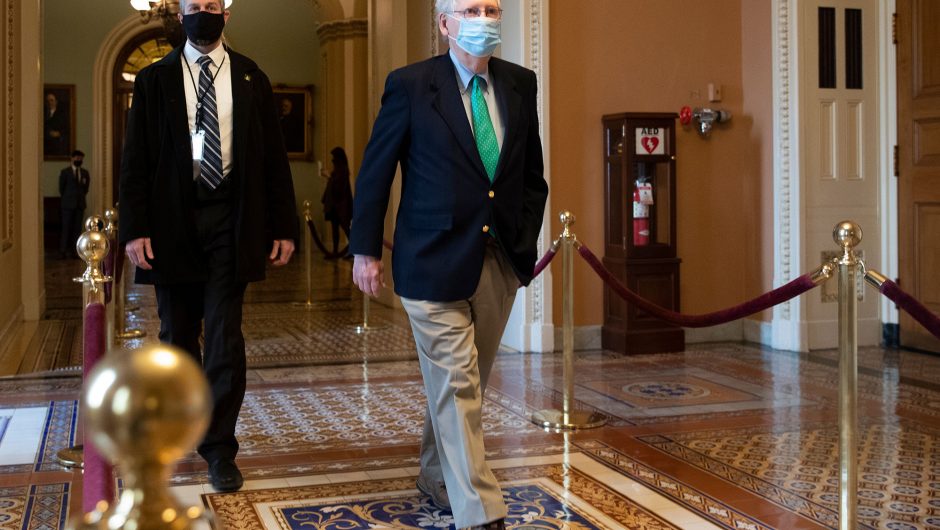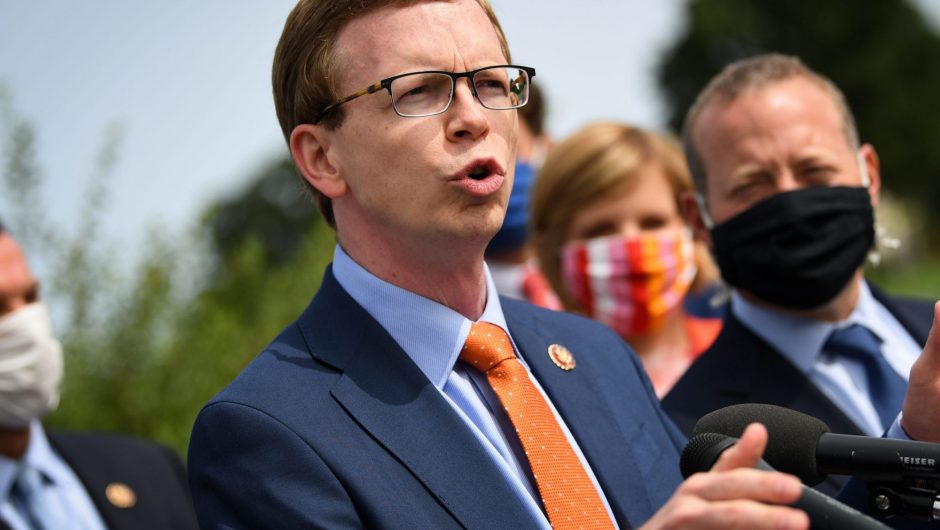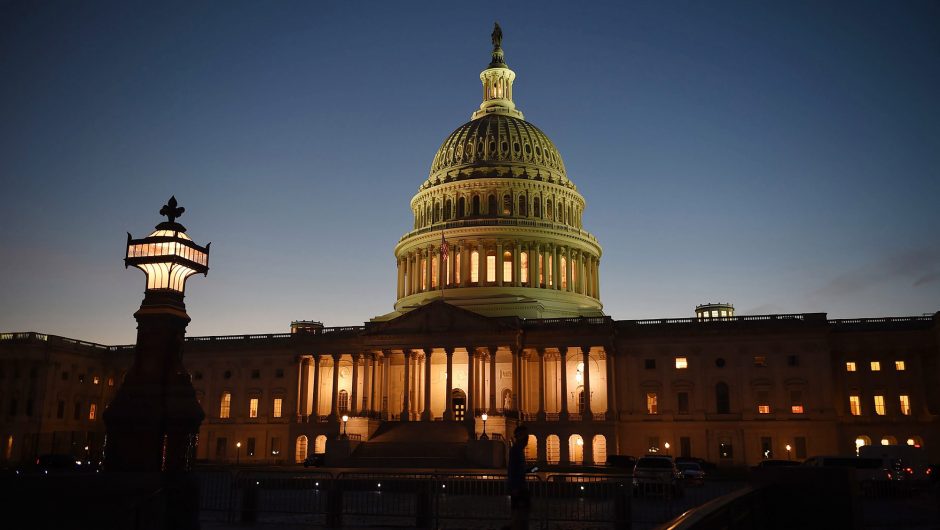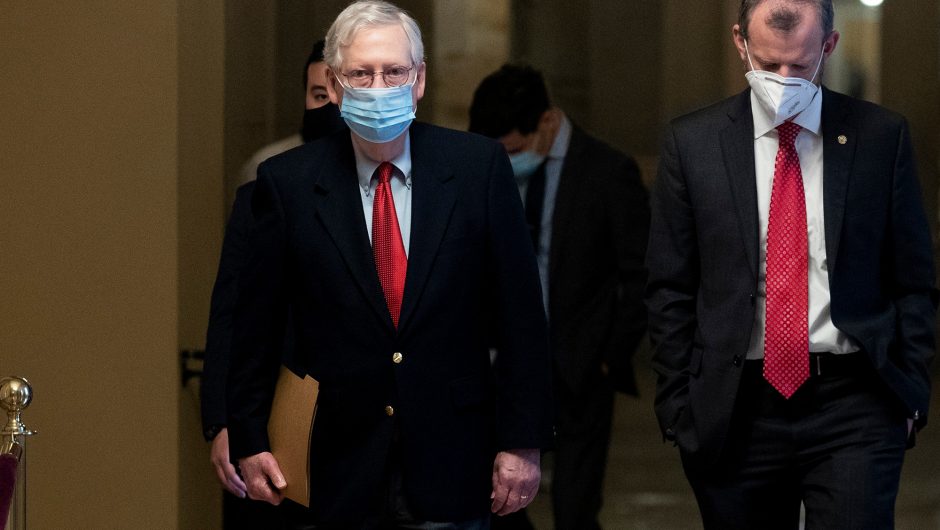WASHINGTON — Lockdowns and protective measures like the widespread wearing of face masks as a result of the coronavirus pandemic have driven influenza infections to record lows, according to a new Centers for Disease Control and Prevention study.
The authors of the study urge such measures to remain in place in order to keep the flu from returning, as it customarily does with colder weather, which will soon drive people indoors across much of the U.S. “If extensive community mitigation measures continue throughout the fall, influenza activity in the United States might remain low and the season might be blunted or delayed,” the researchers write in their new study.
The study is being published on Thursday in the CDC’s Morbidity and Mortality Weekly Report, a digest of the latest findings from the agency. The study looked at flu infections in the U.S. from late 2019, when the flu season began, to early 2020, when lockdowns began across the country in response to the coronavirus.
A nurse prepares an injection of the influenza vaccine. (Brian Snyder/Reuters)
The study also looked at how the flu affected countries in the Southern Hemisphere, where winter lasts from June to August, using World Health Organization data from Chile, Australia and South Africa.
The findings show an astonishing drop in influenza infections both at home and abroad. In the U.S., for example, there was a 98 percent decline in samples testing positive when comparing the October 2019-February 2020 period with March-May 2020, a sharper and more pronounced reduction than the nation has seen in recent years. And even though seasonal drops in flu infections are to be expected, the new study says that “interseasonal circulation” of the influenza virus “is now at historic lows.”
The weekly average of positive lab results is now 0.2 percent, compared with 2.35 percent in 2019. The positive rate is usually between 1 and 2 percent.
Commenting on the new study, Sonja Olsen, an epidemiologist at the CDC’s National Center for Immunization and Respiratory Diseases, said, “Actions to stop the spread of SARS-CoV-2, the virus that causes COVID-19, … could reduce the impact of flu this fall and winter in the United States if widely practiced. However, it is impossible to say with certainty what will happen during the upcoming flu season, making it important to prepare for both flu and COVID-19. Getting a flu vaccine offers the best protection against flu during any flu season, and it is more important than ever during 2020-2021 because of the ongoing COVID-19 pandemic.”
Story continues
In late February most Americans became cognizant of the coronavirus, which originated in China and then spread to the Middle East and Europe. At first President Trump and many of his allies publicly maintained that COVID-19, the disease caused by the coronavirus, was no worse than the flu. To date, COVID-19 has killed close to 200,000 Americans. The flu, on average, kills between 30,000 and 40,000 Americans per year.
A graphic from the latest CDC Morbidity and Mortality Weekly Report.
The three countries in the Southern Hemisphere included in the survey also saw “very low influenza activity” during their just-concluded flu season, a potentially encouraging sign for the United States. In those three nations, there were a total of 51 flu cases out of 83,307 samples tested. That made for a positivity rate of 0.06 percent, much lower than the 13.7 positivity recorded there between 2017 and 2019.
The decrease in influenza infection is a relatively minor silver lining given the human and economic wreckage caused by the coronavirus. Still, the precipitous drop seems to suggest that prophylactic measures, such as social distancing and masks, that target one virus can also work against another.
Public health officials have worried that a twin assault from the coronavirus and flu could overwhelm hospitals. “There’s a possibility that the assault of the virus on our nation next winter will actually be even more difficult than the one we just went through,” CDC Director Robert Redfield told the Washington Post last spring, in part because Americans could have to contend with both viruses.
Trump tried to have Redfield retract the assertion at a White House press briefing, but Redfield did not, instead backing up Dr. Anthony Fauci, the leading National Institutes of Health immunologist. “We will have coronavirus in the fall. I am convinced of that,” Fauci said at the same briefing.
CDC Director Robert Redfield at a Senate Appropriations subcommittee hearing on Wednesday. (Andrew Harnik/Pool/via Getty Images)
The steps taken against the coronavirus are what could mitigate the impact of the flu — if people adhere to the protective measures that have been in place since last spring. “The use of community mitigation measures for the COVID-19 pandemic,” the CDC researchers write, “plus influenza vaccination, are likely to be effective in reducing the incidence and impact of influenza, and some of these mitigation measures could have a role in preventing influenza in future seasons.”
The mitigation practices urged by researchers have become familiar to most Americans, even as some have refused to adopt them: “face masks, social distancing, school closures, and teleworking.”
Trump has continued to rail against face masks, arguing earlier this week that there are sound reasons not to wear one. From a public health perspective, those reasons do not exist. He has also urged a reopening of schools for in-person instruction, dismissing arguments that it is not yet safe to do so.
The new study points to “growing evidence” that masks not only keep an infected person from spreading viral particles but also keep healthy people from getting sick.
_____
Read more from Yahoo News:








